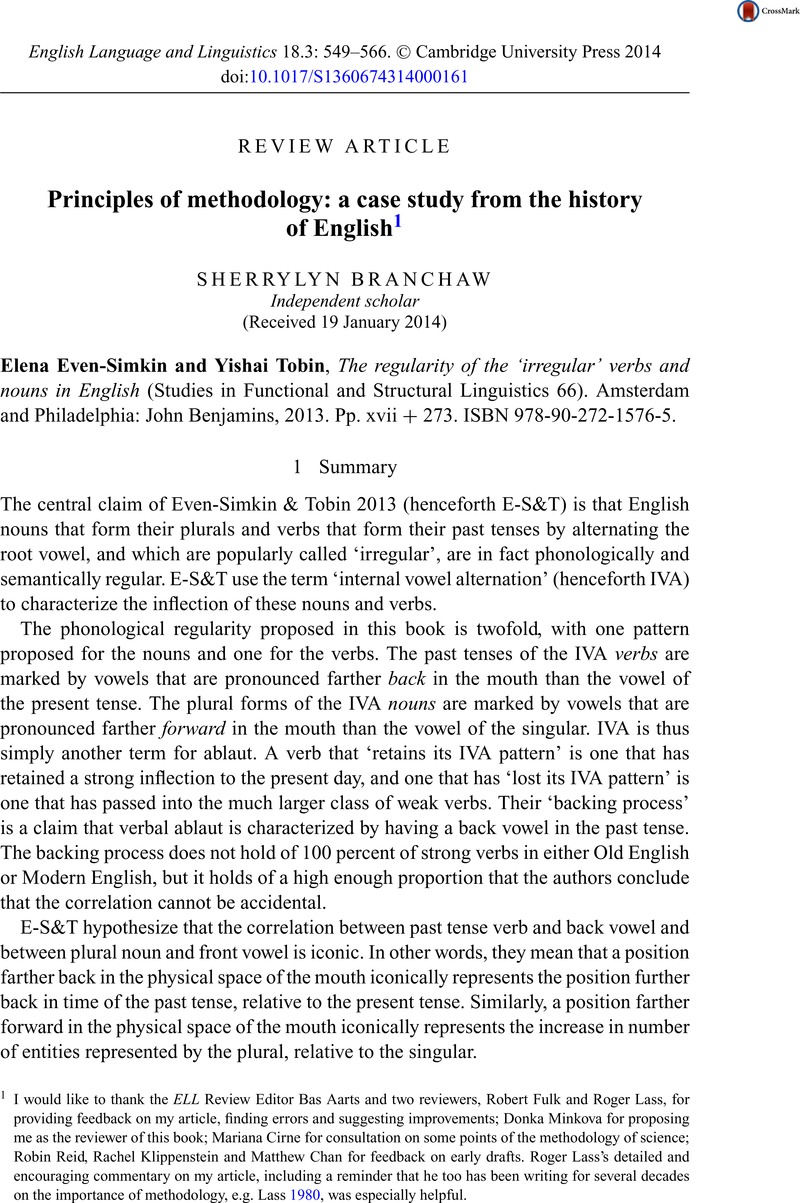Published online by Cambridge University Press: 28 October 2014

I would like to thank the ELL Review Editor Bas Aarts and two reviewers, Robert Fulk and Roger Lass, for providing feedback on my article, finding errors and suggesting improvements; Donka Minkova for proposing me as the reviewer of this book; Mariana Cirne for consultation on some points of the methodology of science; Robin Reid, Rachel Klippenstein and Matthew Chan for feedback on early drafts. Roger Lass's detailed and encouraging commentary on my article, including a reminder that he too has been writing for several decades on the importance of methodology, e.g. Lass 1980, was especially helpful.